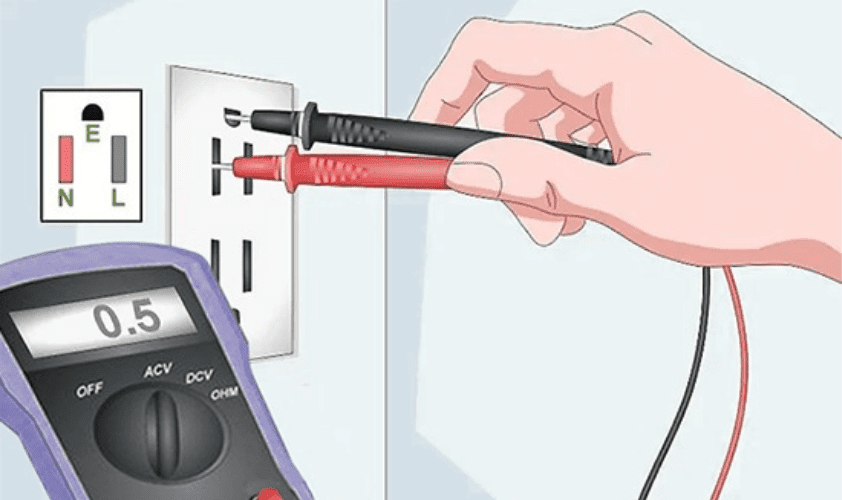

Earthing connects all the major electrical equipment in our house such as fridge, AC, washing machine, grinder to the ground. So when there is an event of a power surge or lightning strike the extra current formed in the system is easily drawn down to the earth, protecting them from fire or damage.
Here are the reasons to do an effective house earthing:
a) To protect electrical appliances from damages arising due to faulty currents.
b) To prevent the risk of fire outbreaks that may arise from current leakage.
c) To maintain a stable voltage in three-phase circuits of an electrical system, even when the load is unstable.
d) Earthing prevents electric shock and damage caused by lightning strikes, by providing a low resistive path that quickly carries the fault currents to the ground.
House Earthing Design :
In house wiring, a connection from the earth point of all sockets is connected to the earth link in the Distribution Box. From the distribution box (DB), we connect them to the earth plate or earth electrode.
Whenever there is a circuit overload or power surge, current flows through the earth electrode to the ground. House earthing protects you from electric shock by providing a conductive path that carries the faulty current to the ground.
Earthing Requirement:
House Electrical grounding is one of the easy techniques for electrical safety in a house and requires the following materials:
They include spanners and pliers to adjust the clamp, a continuity tester to test for continuity.
Other tools needed for earthing include a shovel, digger, or excavating machine.
You can easily check whether your house earthing is effective using a few simple methods. In this section, we will discuss two reliable ways to determine if your earthing system performs efficiently. Moreover, these checks can help you detect any hidden faults and ensure long-term electrical safety.
First Method: Using a test lamp/bulb
Plug the wires from the lamp into the positive and negative ports of the outlets or sockets. The positive port should go to the right hole of the socket, while the negative port should be connected to the left hole. Turn ON the switch, and you will see the bulb glowing brightly. Now, remove the negative wire and insert it into the earthing port (the top hole) of the socket. The bulb should glow brightly as before. If it does not glow, it means there is no earthing in the house. But if the bulb glows and dims or flickers, it means that the house earthing is faulty.
Second Method: Using a multimeter
Conclusion:
If a house is not earthed, people and animals living there may get electrocuted whenever there is a power surge. It may also damage the appliances and can even cause a fire outbreak. So it is crucial to have an efficient earthing done for every house.
Click here to view all of Axis’s Lightning Protection, Lightning Arresters and Earthing products.
Earth resistance is the measure of how easily electric current can flow from an electrode…
Lightning arrester rods, surge arresters, or lightning conductors are metal rods installed on a building…
Follow us on LinkedIn for the latest updates The protective angle method is one of…
In this trending era of technology and development, earthing in substations plays a vital role.…
The electrically conductive connection between the air-termination system and the earth-termination system is the down…
In this blog, we're focusing on the essential differences between Galvanised Iron Pipe Earthing, also…